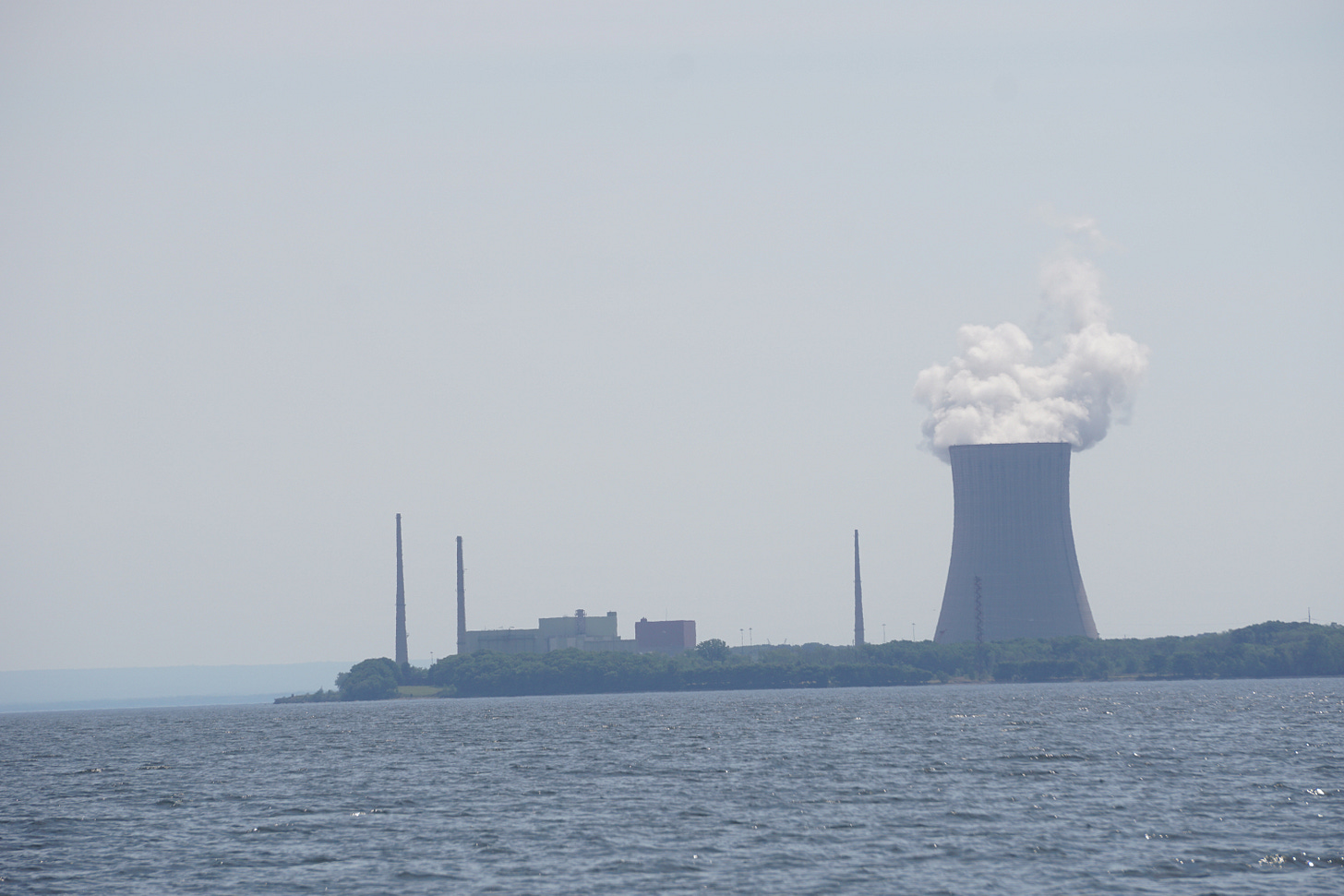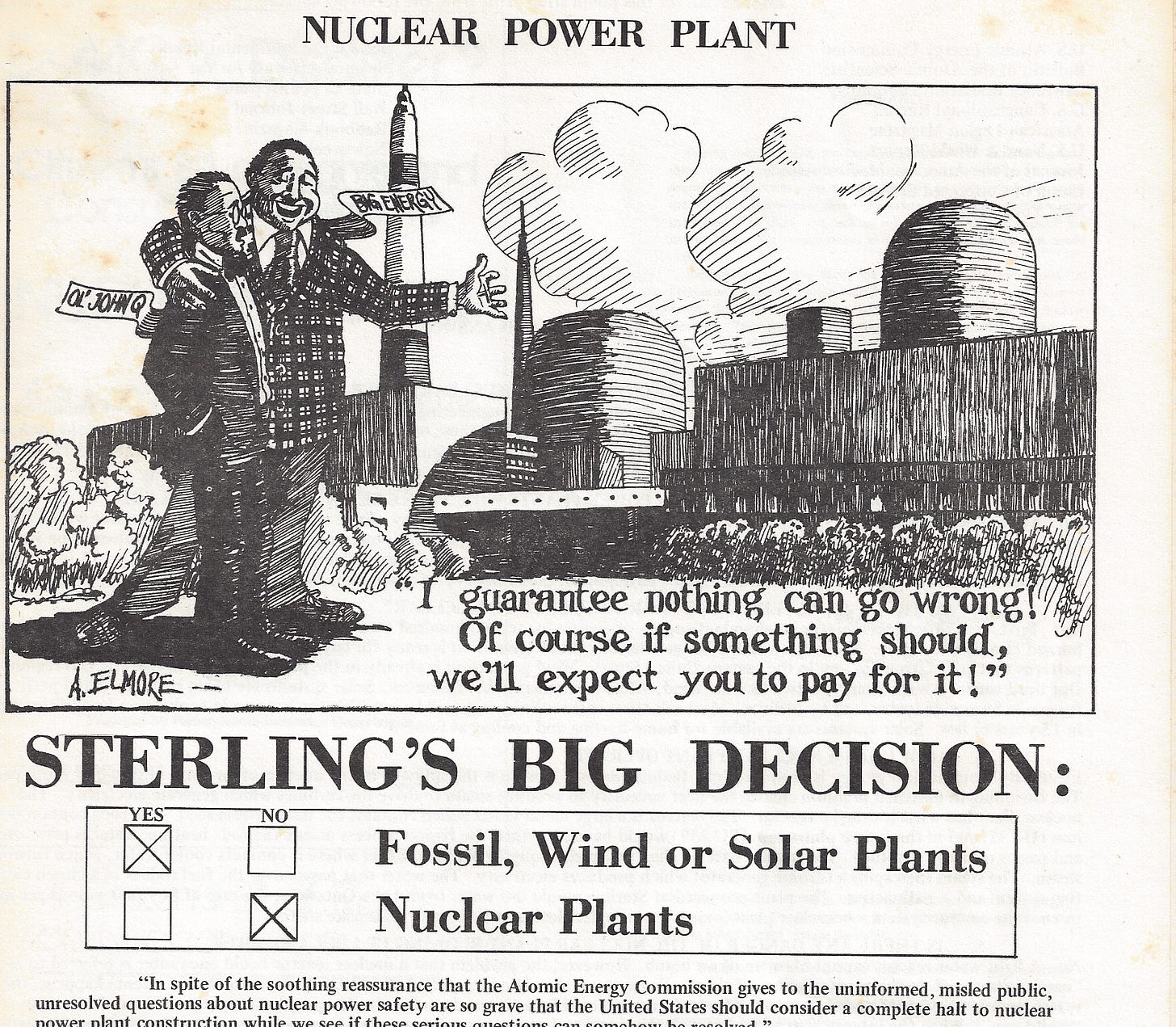This is a brief account of how more than a thousand acres including miles of Lake Ontario Shoreline were preserved as forest, wetland and undeveloped public beach.
Do peaceful demonstrations with signs, flags and street theater make a difference? What about letters to the editor or speeches at public meetings? Is peaceful protest all just a waste of time? I know for a fact that it does make a difference. A 1400 acre park on the south shore of the lake is proof.
The Sterling Nature Center in Cayuga County is a gem of a public park. It includes two miles of undeveloped shoreline with a bluff, small creek and a sizeable buttonbush swamp. A small area of private land separates it from another protected area of shoreline fronting a 2000 acre state park. And it exists because of public protest.
geese and beaver at the “Dragonfly Pond” at the Sterling Nature Center
Once upon a time about fifty years ago several public utility companies decided to jump on the bandwagon of nuclear power. It was 1972 and nuclear power was the latest great thing-electricity too cheap to meter. And Lake Ontario was a perfect location for a half dozen atomic plants with their need for vast quantities of cooling water. One proposed site was located a few miles west of Oswego and here several public utilities proposed to build a large generating station. RG&E led the coalition.
for many years a heron rookery in a large beaver pond was a park highlight
Between 1975 and 1992 somehow a small group of locals convinced government regulators to reconsider this ideal place. And after that, somehow the citizens of the area evaded becoming hosts to other unsavory proposals including a low level rad waste depository, a landfill, or a toxic waste dump? It took twenty years of protest, but like the women who fought for the right to vote in the last century, they persisted. The Sterling Nature Center County Park’s preservation endures today as a monument to compromise.
painting of farm house that served as Nature Center building for many years
After World War II’s abrupt end following the incineration of perhaps two hundred thousand Japanese residents of Hiroshima and Nagasaki, the bright promise of infinite energy supplies from controlled chain reactions blazed bright in the eyes of visionaries. Human hubris, no doubt with a dash of guilt, fueled the development of “civilian” nuclear power to generate abundant affordable electricity. Or so the atomic enthusiasts said. Actually, in America anyway, the US government subsidized source of energy looked like a gold mine for public utility profits. In 1965-66 construction began on Lake Ontario’s NY shore of two of the first commercial nukes in the country while the neighbors to the north went to work on some of the first CANDU’s at Pickering. Soon Lake Ontario was the Great Atomic Lake.
America was on a roll. We were going to the moon. Demand for power was infinite and who could possibly object to the jobs and local tax revenues from such ventures?
at one time three nuke plants like those of Nine Mile Point were proposed for Sterling
But times keep changing. Just a decade after the Big Dig for Ginna’s reactor pit in the town of Ontario, NY began two miles from my home, events were creating a new world order. This time, unlike RG&E’s first nuke in Ontario, the meager chorus of voices raised in opposition to the Cayuga County site sparked a community wide movement. As the ambitious plan to create a giant center of power generation with several big nukes on 2000 acres of land bogged down, opposition had time to grow. And gather facts. It wasn’t easy though. Rancor between the pro and anti nuke advocates also grew. Ugly rumors, at least one sudden loan foreclosure on a small business, conspiracies involving communist funding, mob influences, corruption, bigotry and paranoia clashed with solidarity, hope, ambition and good old fashioned greed. But the world changed, and the infinite growth curve for power demand flattened. After the revelation that all the power produced at the plant was “excess” and would be sent to NY City, the state regulators denied an operating permit. The land was spared.
Is it safe to come ashore yet?
However, the potential profitable possibilities associated with 3000 acres with no human residents attracted other ideas. Two different proposals to create and or process toxic industrial waste were opposed by locals. The state thought the site would be a grand place for low level radioactive waste. It would have been a nice balance to offset the high level rad waste at West Valley in western NY. At a meeting over a thousand unhappy residents gathered at the Cato Meridian High School to express opposition. Some wore masks, at least one dressed up as the Grim Reaper, and others decorated their cars and trucks with large signs. The town supervisor was quoted by the newspaper, “First big business wanted to put a nuclear plant in Sterling. Then a toxic waste dump. Then government tried to use our land for an Indian Reservation. Now you want to put a radioactive waste dump in our yard. Our big mistake was purchasing snowplows so we could open our roads to you. Instead we should have purchased a tank to keep you out!”
Out of this heated emotional stew came a compromise. An agreement was reached. The county purchased the land. Half would be kept undeveloped as a lake shore park. The other half would be sold off for zoned development. And so it was. Thanks to prolonged efforts by first a few, then dozens, then hundreds of local residents the land remains largely in a natural state. After it was all over one former protester wrote to the local paper, “If you think you can’t do anything you are right, but remember “American” ends with ‘I can’
Today forest flowers instead of concrete and radionucides prevail at the Nature Center












Thanks, Susan!